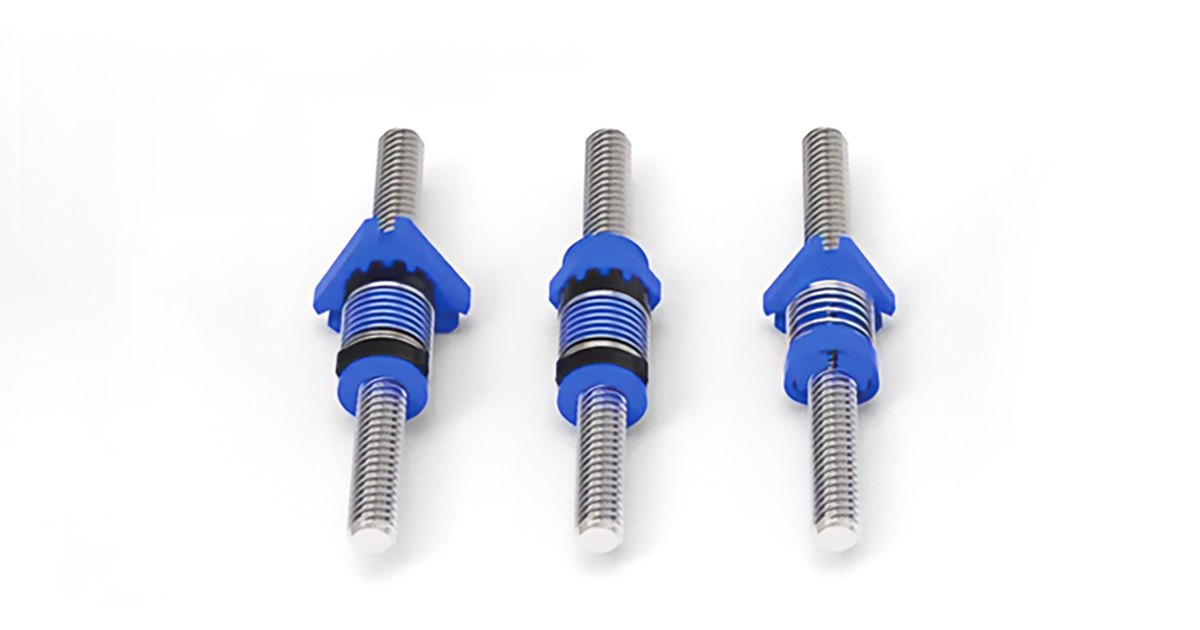Lead Screw Column Strength Explained

It goes without saying that there are a lot of factors that go into selecting the right lead screw for your linear motion application. In a previous post, we told you about the importance of critical speed, which is defined as the speed that excites the natural frequency of the lead screw. And, as we covered, it's recommended that the maximum speed be limited to 80 percent of the calculated critical speed. You can use our lead screw calculators to determine the exact performance requirements of your application.
In this post, we're going to cover another important factor when it comes to screw selection - column strength. The column strength is important to consider when it comes to thrust. Generally speaking, the more thrust an application requires, the larger the screw diameter will have to prevent bowing or deflection during compression. Simply put, column strength is important because the screw needs to be able to support the load without failing - and improperly specified screws can buckle or bust.
Specifically, column strength is defined as the maximum compressive load that can be applied to a shaft without taking a permanent set. Here's a look at the formula to determine column strength in pounds (lbs):
Pcr = 14.03 x 106 x Fc x 104 / L2
The variables in the formula are as follows:
- "Pcr" is the maximum load in pounds (lbs)
- "Fc" is for end fixity. For one end fixed, one end free it's 0.25; for both ends supported it's 1.0; for one end fixed, one end simple, it's 2.0; for both ends rigid it's 4.0
- "d" is the root diameter of the screw (in inches)
- "L" is the distance between the nut and load-carrying bearing (inches)
In order to determine whether or not the screw column strength is appropriate, feel free to contact us for more information and/or a free engineering consultation, or take a look at one of the charts that we've put together to help you determine the appropriateness of the screw that you are considering for your application.
Column Strength: Inch Lead and Acme Screws
So what do you do if your column strength not quite adding up? You might be wondering how can you correct a situation where a screw doesn't meet the proper criteria for compression load. Well, there are three main things that you can do to remedy this situation. They include:
- Increasing the screw diameter. Remember, the more thrust an application requires, the larger the diameter of the screw needs to be in order to sufficiently support it.
- Changing the design to use the screw in tension.
- Changing the end fixity configuration. To review, end fixity is the means by which the ends of the screw are supported. The main types of end fixity include simple end fixity, which is where end fixity is provided by single bearing support; multiple or a spaced pair of bearings, which can help make the application more rigid; and various other combinations.
For example, say you have a lead screw for an automotive application that's buckling under pressure. The first thing that you might do is increase the screw diameter to give it more strength. In automotive applications, it's common for lead screws to start at 12 millimeters in diameter and go all the way up to 120 millimeters in diameter.
As noted, other ways to improve column strength for your application include changing the end fixity and/or design to use the screw in tension.
While selecting a screw for your application may seem like a simple decision, there's a lot that goes into it - and many different factors that must be considered. Lead screw column strength is certainly of importance when it comes to application performance and safety.


